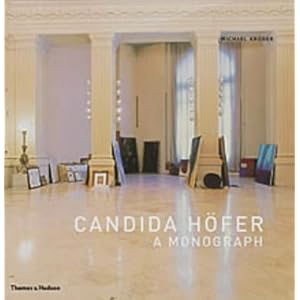Her work focuses primarily on interior spaces and has a quite architectural feel to it. Her photographs are not intimate studies of peoples living space, rather they treat interior space as a form of sculpture that needs to be visually analysed and placed in some sort of order. The overall impact of looking at a volume of her work is one of dissociation from society, the spaces she photographs are clearly intended to be used, libraries, theatres, dining rooms all feature, however, the absence in them drives an eerie sense that something is wrong. It is reminiscent of a post apocalyptic event that has destroyed humanity and yet left the buildings pristine.
Technically the photographs are very precise, the lighting is even and informative. I found it difficult to tell whether she had used supplemental lighting within the photographs. Her colour palette is quite restrained, not muted, but soft. This clearly distinguishes her style from that of architectural photographers who tend to adopt a very crisp saturated look to their images. Although the subject is a building the treatment is not architecture. Two aspects of her work particularly appeal to me and that is the frequent use of strong symmetry and repetition within the images. To a degree buildings always exhibit symmetry and repitition in structure is not uncommon. Her work accentuates this, lines of chairs seem to march diagonally across the frame and books span from floor to ceiling.
Although the photographs are interiors exhibiting little or no natural forms I would argue that this is a form of landscape photography, but a very constrained and localized landscape. Individually the photographs are not terribly special, seen as a whole they leave a powerful sense of dissociation from reality. This is a struggle for me, with the OCA assignments we typically present 12 images, each of which has to be strong on its own, if we were asked to present 100 images I would deliver a very different set. My takeaway from this book, landscape is everywhere it is simply a matter of how you choose to look at it!


No comments:
Post a Comment